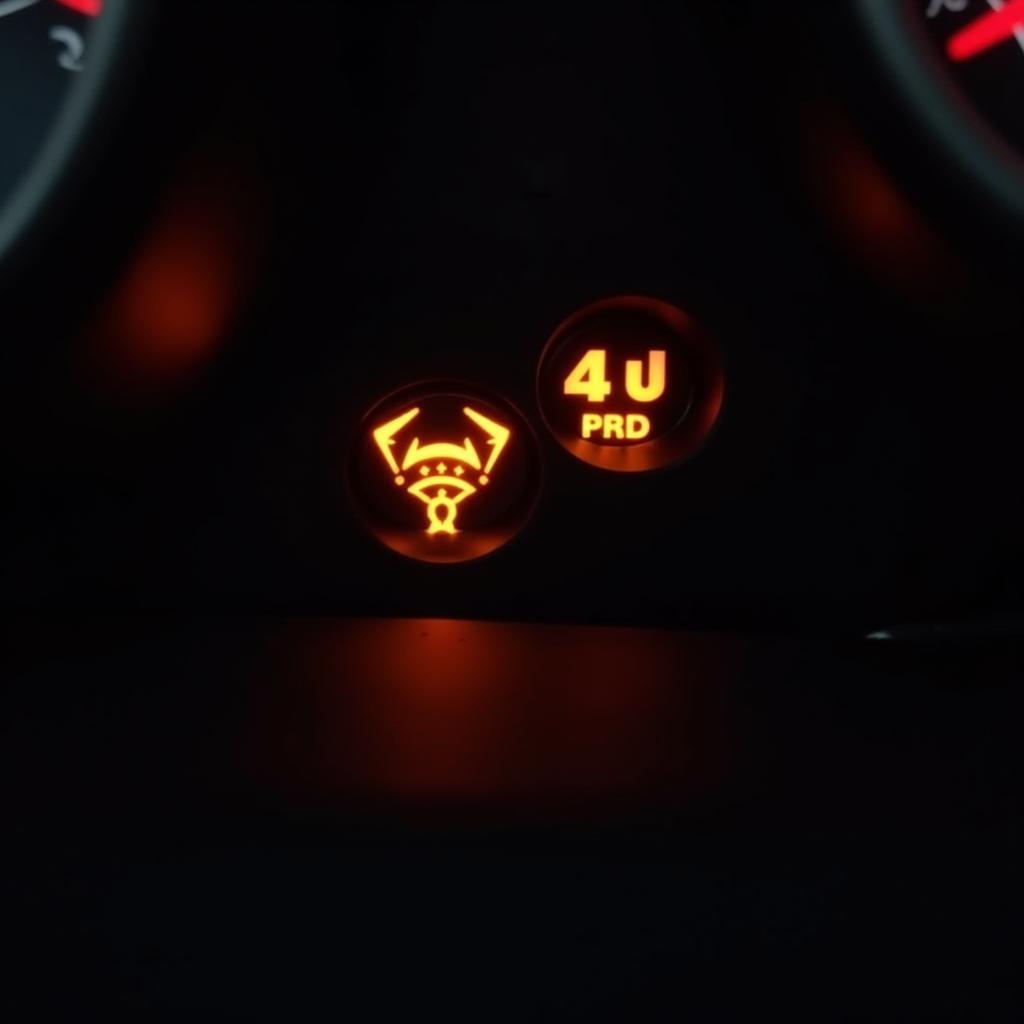The dreaded brake pad warning light on your dashboard. You see it, and maybe you feel a little pang of anxiety. Is it a minor annoyance or a major safety concern? The answer is a little of both. While your car likely won’t transform into a smoking wreck as soon as the light illuminates, ignoring it could lead to costly repairs and, more importantly, compromise your safety on the road.
This comprehensive guide delves into everything you need to know about that glowing “check brake pads” warning light – what triggers it, what it means, and what steps you can take to address the underlying issue.
What Triggers the Check Brake Pads Warning Light?
There are several reasons why your check brake pads warning light might be on:
- Worn Brake Pads: The most common culprit. Brake pads are designed to wear down over time. When they become too thin, a sensor triggers the warning light, signaling it’s time for a replacement.
- Worn Brake Rotors: Just like brake pads, brake rotors (the discs that the brake pads grip) can also wear down over time. Excessive wear can cause uneven braking and trigger the warning light.
- Low Brake Fluid: Brake fluid is essential for your car’s hydraulic braking system. A leak in the system can lead to low fluid levels, triggering the warning light.
- Faulty Brake Pad Sensor: In some cases, the brake pad sensor itself may be faulty, triggering the warning light even if your brake pads are in good condition.
- Electrical Issues: Electrical problems, such as a short circuit or loose wiring, can also cause the check brake pads warning light to illuminate.
 Brake Pad Warning Light on Dashboard
Brake Pad Warning Light on Dashboard
Is It Safe to Drive with the Check Brake Pads Warning Light On?
The short answer is: it depends. While you might be able to drive for a short distance, it’s not recommended. Here’s why:
- Reduced Braking Performance: Worn brake pads mean your car will take longer to stop, increasing the risk of an accident.
- Damage to Brake Rotors: Driving with worn brake pads can cause damage to your brake rotors, leading to costly repairs.
- Complete Brake Failure: In extreme cases, ignoring the warning light can lead to complete brake failure, putting you and others at serious risk.
If your check brake pads warning light comes on, it’s best to err on the side of caution:
- Pull over to a safe location: As soon as it’s safe, pull over to the side of the road or find a safe place to stop.
- Check your brake fluid level: If you’re comfortable doing so, check your brake fluid level. Low brake fluid is a serious issue that requires immediate attention.
- Contact a mechanic: If you’re unsure about the cause of the warning light or if you suspect a serious problem, it’s best to contact a qualified mechanic.
 Mechanic Checking Brake Fluid Level
Mechanic Checking Brake Fluid Level
How to Fix the Check Brake Pads Warning Light
The solution to your check brake pads warning light depends on the underlying cause. Here are some common fixes:
- Brake Pad Replacement: If your brake pads are worn down, you’ll need to have them replaced.
- Brake Rotor Resurfacing or Replacement: If your brake rotors are worn or damaged, they may need to be resurfaced or replaced.
- Brake Fluid Flush and Refill: If your brake fluid is low, you’ll need to have the system inspected for leaks, flushed, and refilled.
- Brake Pad Sensor Replacement: If the brake pad sensor is faulty, it will need to be replaced.
- Electrical Repair: If the warning light is caused by an electrical issue, the problem will need to be diagnosed and repaired by a qualified mechanic.
How to Prevent the Check Brake Pads Warning Light From Coming On
Preventing the check brake pads warning light from coming on is all about proactive car maintenance. Here are a few tips:
- Regular Brake Inspections: Have your brakes inspected by a qualified mechanic at least once a year, or more frequently if you drive in harsh conditions.
- Pay Attention to How Your Brakes Feel: Be aware of any changes in how your brakes feel, such as squeaking, grinding, or vibrations.
- Avoid Riding Your Brakes: Avoid riding your brakes, especially on long downhill grades. This can cause excessive wear and tear on your brakes.
- Use High-Quality Brake Pads: Investing in high-quality brake pads can help extend their lifespan and improve your car’s braking performance.
Remote Diagnostics and Software Solutions
In today’s technologically advanced world, remote diagnostics and software solutions are playing an increasingly important role in automotive repair.
warner electric brake service manual
These services allow qualified technicians to remotely access a vehicle’s onboard computer system to:
- Diagnose Brake Problems: By analyzing data from the car’s sensors, technicians can often pinpoint the cause of brake problems remotely.
- Provide Software Updates: In some cases, software updates can be installed remotely to address brake system issues.
- Offer Technical Support: Remote diagnostics can enable technicians to provide real-time guidance and support to car owners.
 Remote Diagnostics for Brake System
Remote Diagnostics for Brake System
Conclusion
The check brake pads warning light is a crucial safety feature in your vehicle. Ignoring it can be dangerous and costly. By understanding what triggers the warning light and taking proactive steps to address the underlying issue, you can help ensure your safety and the longevity of your car’s braking system.
Remember, when it comes to brakes, it’s always better to err on the side of caution and seek professional help if you’re unsure about anything.
